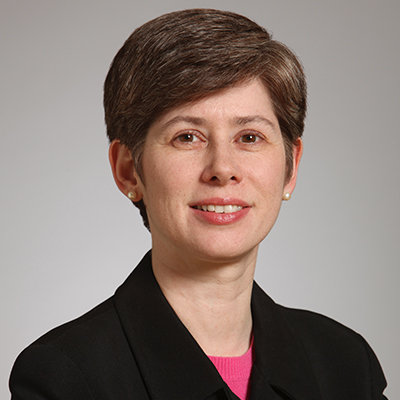Kirkland Lawyers Catch Fairey With Hand in Copyright Jar
Why did artist Shepard Fairey suddenly admit Friday to fabricating and destroying evidence to cover up the truth about which photograph he used to create his iconic "Obama Hope" poster? Because he got caught red-handed, according to a lawyer representing The Associated Press in its copyright dispute with Fairey over the celebrated image.
Kirkland & Ellis partner Dale Cendali says the fuse that set off Fairey's bombshell revelations was lit two weeks ago. That's when The AP's legal team, which also includes Kirkland's Claudia Ray, confronted Fairey's lawyers with "trace evidence" that the artist wasn't being entirely forthcoming in the discovery process. In short, Cendali says, something that was turned over indicated that other items were being withheld.
"We were able," Cendali says, "to detect that there were other documents that should have been produced."
To recap: Fairey, a onetime street artist, relied on an AP photograph shot by freelancer Mannie Garcia as the source of Obama Hope image. Saying Fairey used the picture without permission, The AP notified him that it believed he had infringed the AP's copyright. In February, Fairey—claiming his work constituted a transformative fair use of the photo—filed a preemptive suit against The AP to stave off any potential infringement suit. The AP countersued, accusing Fairey of infringement, as well as acting in bad faith by essentially lying about which Garcia photo he used as a "visual reference" in coming up with Obama Hope. (Garcia himself joined the case several months later, asserting that he, not The AP, holds the copyright on the image.)
Cendali says the evidence that she and her team turned up proved that Fairey was not telling the truth about which Garcia photo he used. (He claimed it was one that showed Obama sitting next to actor George Clooney that required careful cropping; The AP argued that the photo in question was actually a tightly focused head shot of Obama that didn't require any cropping at all.)
Armed with that information, the AP lawyers contacted Fairey's legal team—led by Anthony Falzone, executive director of Stanford University's Fair Use Project—on Oct. 2 with a demand that the missing material be turned over. A week later, on Oct. 9, the Fairey camp responded to with a letter of its own, outlining its plans to amend its complaint against. The reasons were spelled out in a motion to amend Fairey's pleading, filed along with the amended complaint on Friday. Neither document reflects well on the artist.
"Mr. Fairey was apparently mistaken about the photograph he used when his original complaint for declaratory relief was filed on February 9, 2009," the motion states. "After the original complaint was filed, Mr. Fairey realized his mistake. Instead of acknowledging that mistake, Mr. Fairey attempted to delete the electronic files he had used in creating the illustration at issue. He also created, and delivered to his counsel for production, new documents to make it appear as though he had used the Clooney photograph as his reference." (Fairey posted a statement on his website Friday acknowledging his missteps.)
"We're not surprised," Cendali says. "It was always obvious which photograph he had used, as we said in our counterclaim." Fairey's admission, she adds, completely undermines is an example of bad faith that completely undermines the credibility of his fair use argument. "His lies about which photograph he used go to the heart of the case."
The AP is expected to file its own amended pleadings and complaint in federal court on Tuesday, according to spokesman Paul Colford.
Garcia's lawyer, George Carpinello of Boies, Schiller & Flexner, says he was blindsided by the latest revelations. "Needless to say, we're shocked by Fairey's admission that he fabricated documents and destroyed documents," he says. Asked how the latest developments would affect Garcia's claim, Carpinello says, "We are going to aggressively pursue the case to protect Mannie interests."
While Falzone has indicated that he and Fairey's other attorneys, including several with Durie Tangri, plan to withdraw from the case, as of Monday Fairey did not have new counsel. Falzone and Durie Tangri's Joseph Gratz did not immediately return calls seeking comment. In a statement issued over the weekend, Falzone said that despite their decision to drop the case, Fairey's current lawyers "believe as strongly as ever in the fair use and free expression issues at the center of this case, and believe Shepard will prevail on those issues."
Jay Strell, a spokesman for Fairey, says the artist plans to continue his fair use fight against The AP Asked about Cendali's version of events, Strell says, " the important thing is that he realized that with the case moving along this was something he needed to come clean about. He admitted his mistake and is trying to rectify the situation."
REPRINTED WITH PERMISSION FROM THE OCTOBER 19, 2009 EDITION OF IP LAW & BUSINESS © 2009 INCISIVE MEDIA. ALL RIGHTS RESERVED. FURTHER DUPLICATION WITHOUT PERMISSION IS PROHIBITED



